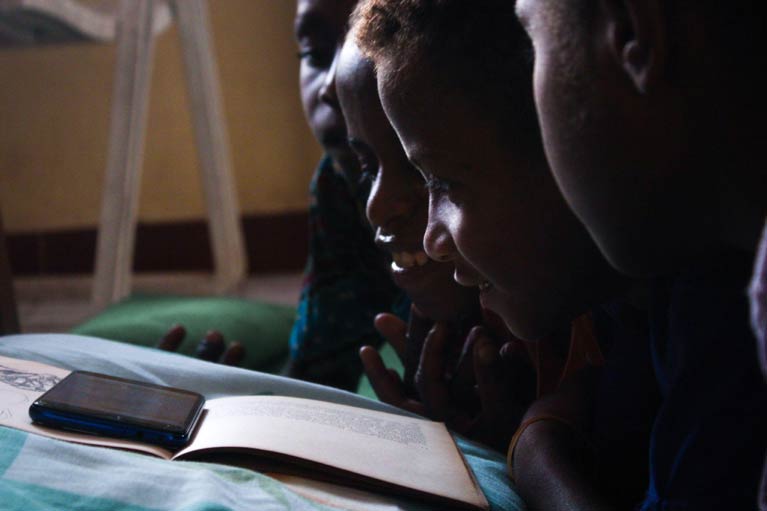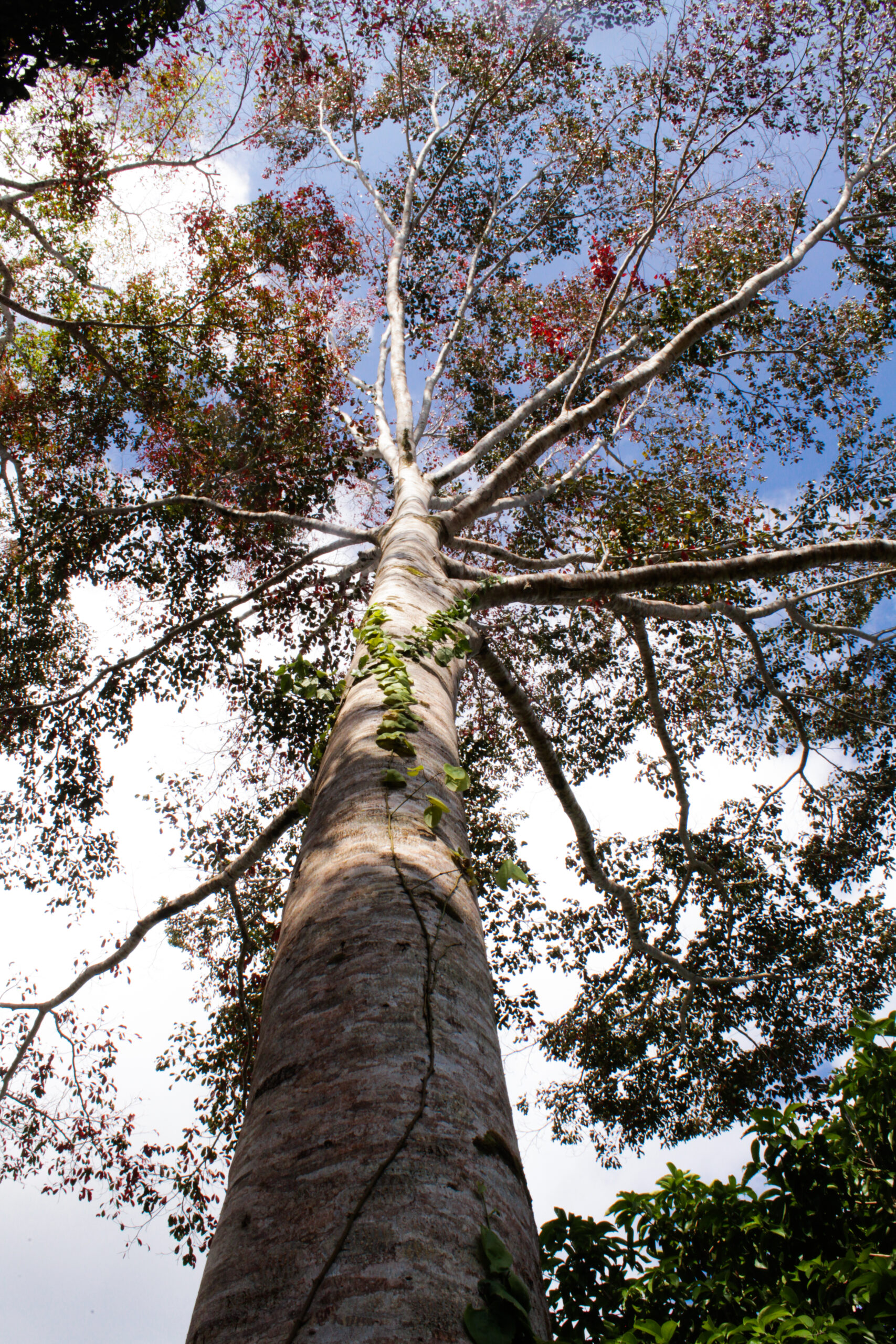Papua Tells Stories
Country: Indonesia
Participants: Indigenous and non-indigenous Papua youth
Bapa Oktovianus Bay (66) in Ombrob Village, one of the last speakers of the Namblong language.
For generations, the Namblong tribe used the Namblong language for daily communication. Now they are facing the possibility of losing this language. It is being rarely used for various reasons including the new education system requiring all students to use the Indonesian language. Several people are working to protect the language, teaching it to younger generations. Preserving the forest plays an important role in keeping the language alive because traditionally the Namblong people live side-by-side with nature. Everything in the forest has a name in the Namblong language and the forest is a medium through which the language is taught. But nowadays there is a lot of illegal logging under the premise of development, further threatening the language.
© Vebry Hembring
The ongoing conflict in West Papua has its roots in the political history of West Papua’s integration into Indonesia, the economic marginalization of Papuans in a resource rich land, the environmental destruction and displacement from resource extraction and human rights violations by Indonesian security forces against Papuans.
In recent years this low-intensity separatist guerrilla war fought by the Free Papua Movement has seen an escalation in tensions and conflict. It garnered attention in 2019 after the violent responses to anti-racism protests which disrupted the initial solidarity built between Papuans and non-Papuans at the beginning of the Papuan Lives Matter movement. This intensification has also seen inter-group conflict between indigenous and non-indigenous immigrant groups within Papua, underlining the need to improve inter-group dialogue and relations.

Forest cleared under the pretext of constructing an electricity tower, which has not been built to this day.
© Vebry Hembring

Anton Tuu and three friends in the reading corner of the St. Bonifasius-Ubrub parish house. In addition to reading books, they learn to write letters and sentences via YouTube.
© Gody Usnaat from their story on the lives and challenges faced by rural children
The Papua Bercerita (‘Papua Tells Stories’) project was started by the Institute for Policy Research and Advocacy (ELSAM) and Peace Brigades International in March 2022, bringing 15 Papuan youths of different indigenous and non-indigenous religious, ethnic and cultural backgrounds together to share perspectives, to discuss issues relating to social realities in Papua and to build inter-group solidarity. Photography was specifically chosen by the partners as a medium that allowed participants to reflect on their personal experiences as Papuans, while opening up space for dialogue between them. Photography is easy to use and allows for the discussion of complex situations as it engages with participants’ subjective experiences as they relate to wider social and political dynamics. Specifically, they wanted to use photography as a means to talk about stereotyping and bias since historical depictions of the people of West Papua by outsiders have fed into existing stereotypes that damage already fraught inter-cultural relationships in West Papua.
Over the course of 10 months the group developed their skills in storytelling and photography to share their views on social and cultural issues in West Papua. The project was structured over three sets of five-day workshops in which participants experimented with polaroid cameras, learned about photography with SLR cameras and storytelling skills, went on photo trips and discussed representation and stereotyping. They developed their own photo projects on the stories about Papua that they wanted to tell. In between workshops participants took pictures and worked online with mentors to develop their projects. Their story subjects ranged from documenting issues with rubbish and waste in the city of Jayapura to the loss of native language and culture and the issues facing children in rural villages. The young people also learned about digital security, mental health and social media during the workshops

A calendar tree. The namblong people believe that the leaves of the tree turning red indicates the arrival of summer.
© Vebry Hembring
‘During training sessions and field trips the focus was on the representation of communities: who is speaking and how is their story framed in a broader context? In this way photography has a transformative power. It can disrupt existing dominant hierarchies by sharing a point of view that has historically been underrepresented. In exploration of these topics the participants developed stories that they want to tell about Papua’.

Walking among piles of trash, a worker pays attention to organic waste that will be sorted and sold to people who raise livestock.
© Christina Soge from their story on waste disposal in Jayapura City / Papua Tells Stories, Western Papua
The project culminated in an exhibition in Jakarta which sought to reach Indonesian audiences, particularly youth, and tackle stereotypes by engaging them with Papuan stories that they would not have seen before. Discussions with youth, activists and NGOs alongside the exhibition created spaces for building dialogue and solidarity. Papua Tells Stories also published a photo book.

